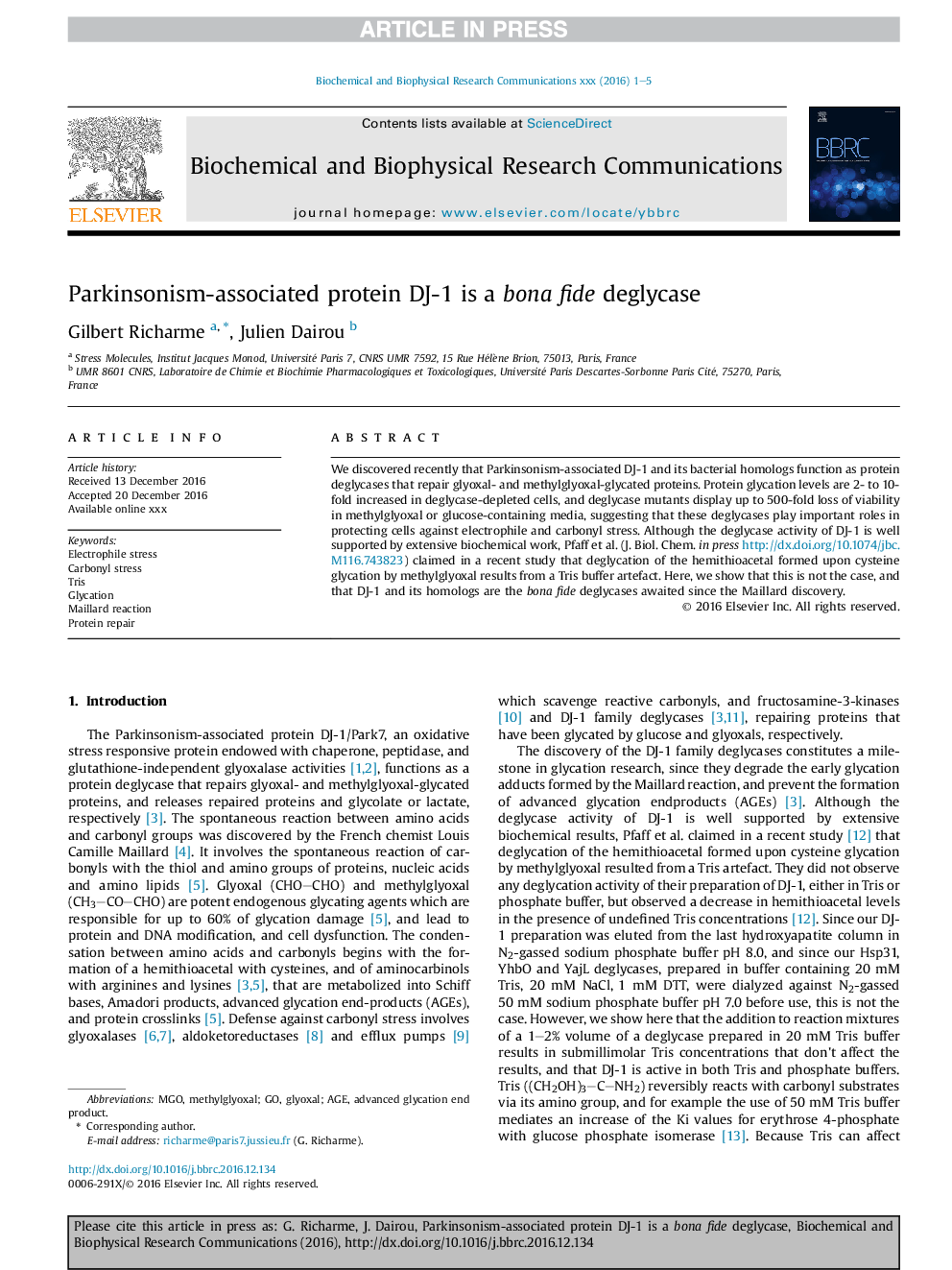| Article ID | Journal | Published Year | Pages | File Type |
|---|---|---|---|---|
| 5505606 | Biochemical and Biophysical Research Communications | 2017 | 5 Pages |
Abstract
We discovered recently that Parkinsonism-associated DJ-1 and its bacterial homologs function as protein deglycases that repair glyoxal- and methylglyoxal-glycated proteins. Protein glycation levels are 2- to 10-fold increased in deglycase-depleted cells, and deglycase mutants display up to 500-fold loss of viability in methylglyoxal or glucose-containing media, suggesting that these deglycases play important roles in protecting cells against electrophile and carbonyl stress. Although the deglycase activity of DJ-1 is well supported by extensive biochemical work, Pfaff et al. (J. Biol. Chem. in press http://dx.doi.org/10.1074/jbc.M116.743823) claimed in a recent study that deglycation of the hemithioacetal formed upon cysteine glycation by methylglyoxal results from a Tris buffer artefact. Here, we show that this is not the case, and that DJ-1 and its homologs are the bona fide deglycases awaited since the Maillard discovery.
Keywords
Related Topics
Life Sciences
Biochemistry, Genetics and Molecular Biology
Biochemistry
Authors
Gilbert Richarme, Julien Dairou,
